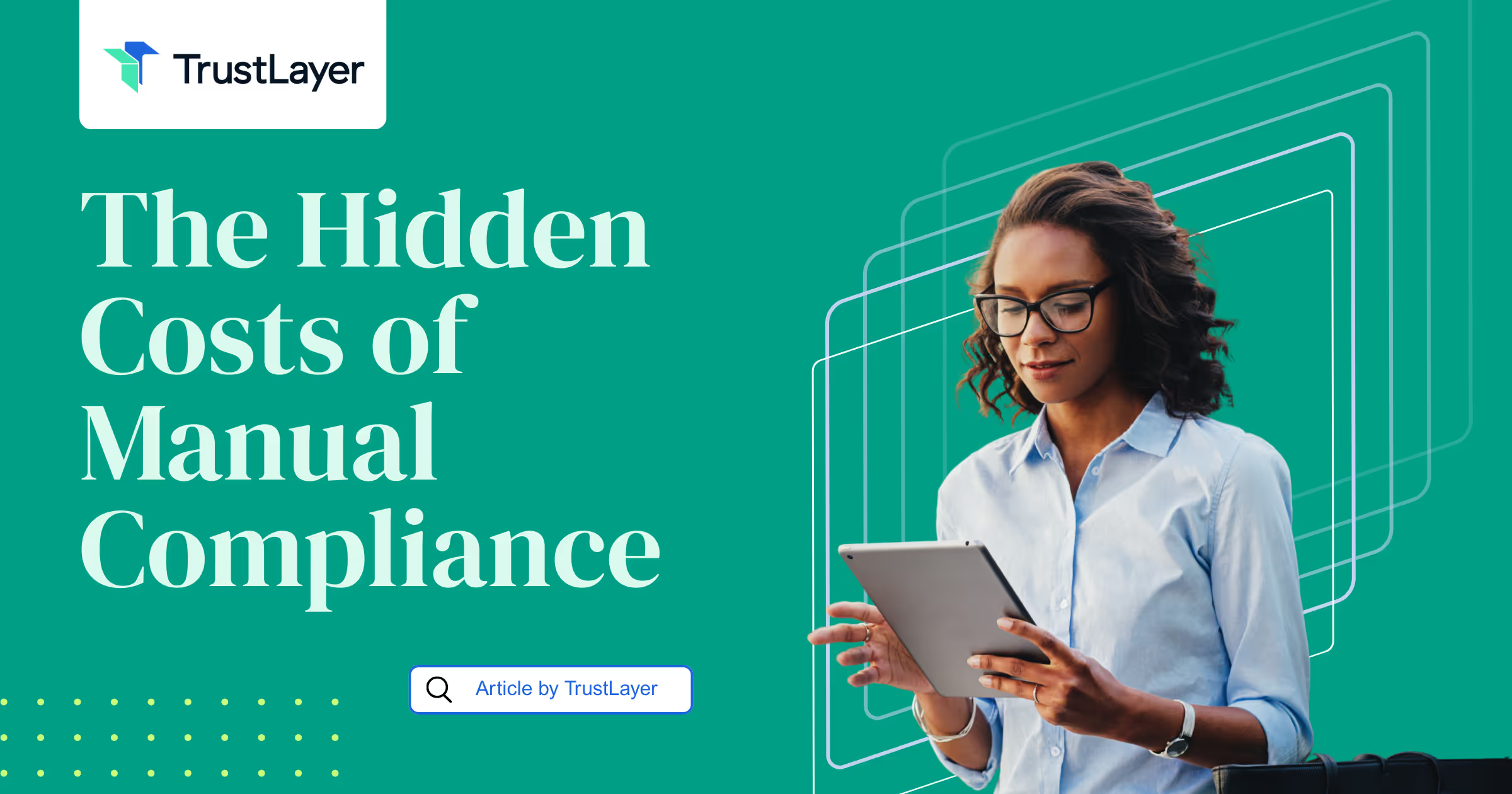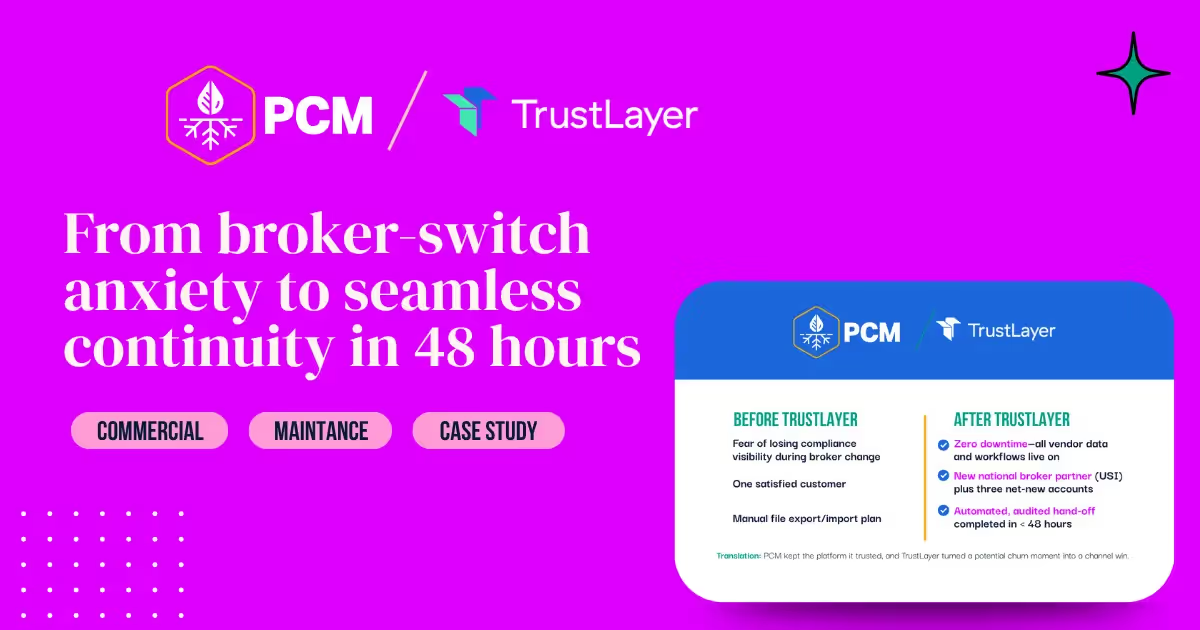The Role of Document Tracking Software in Compliance Management
In today's fast-paced business environment, compliance management has become a critical aspect of ensuring smooth operations and maintaining a trustworthy reputation.
The ever-increasing number of regulations and the complexity of compliance requirements make it challenging for businesses to keep track of all the necessary documents and ensure they are up-to-date, all while prioritizing computer security and data security. This is where document tracking software plays a crucial role, streamlining the regulatory compliance management process and providing organizations with the tools they need to stay on top of their obligations.
Understanding Compliance Management
Compliance management is the systematic approach employed by organizations to ensure that they adhere to the legal and industry-specific regulations applicable to their operations. A robust compliance management program encompasses activities such as policy development, risk assessment, regulatory monitoring, and internal audits.
The primary objective is to prevent non-compliance, mitigate risks, and maintain the integrity of business operations. Companies that effectively manage compliance reduce the risks of money laundering, financial penalties, and reputational damage.
The Importance of Compliance in Business Operations
Compliance is not just about avoiding penalties and legal repercussions; it plays a fundamental role in establishing trust and credibility with stakeholders. A solid compliance management framework demonstrates a commitment to ethical practices, protects against reputational damage, and fosters a positive business environment. Furthermore, complying with regulations helps to minimize operational disruptions, financial losses, and potential legal liabilities.
When organizations prioritize compliance, they create a culture of integrity and accountability. Employees are more likely to adhere to ethical standards and follow established procedures, resulting in increased efficiency and productivity. Additionally, compliance management ensures that companies operate within the boundaries of the law, promoting fair competition and a level playing field for all industry players.
Moreover, compliance is a critical aspect of risk management. By identifying and addressing potential compliance risks, organizations can proactively mitigate the likelihood of regulatory violations and associated consequences. This proactive approach helps to safeguard the company's reputation and maintain the trust of customers, investors, and other stakeholders.
Key Elements of Compliance Management
Compliance management encompasses several key elements that are crucial for ensuring effective adherence to regulations. These elements include:
- Policy Development: Creating comprehensive policies and procedures that align with the applicable regulations
- Risk Assessment: Identifying vulnerability and assessing the risks associated with non-compliance
- Regulatory Monitoring: Keeping up with the evolving regulatory landscape, such as that of the General Data Protection Regulation (GDPR) and the Health Insurance Portability and Accountability Act (HIPAA).
- Training and Education: Providing employees with the knowledge and skills required to comply with regulations.
- Internal Audits: Conducting regular audits to maintain governance and discipline, assess compliance levels, and identify any gaps.
Policy Development
Policy development is a critical component of compliance management. Organizations must establish clear and concise policies that outline the expected behaviors and actions required to comply with regulations. These policies should be regularly reviewed and updated to reflect changes in the regulatory environment and industry best practices.
Risk Assessment
Risk assessment is another essential element of compliance management. By identifying potential risks associated with non-compliance, organizations can develop strategies to mitigate these risks effectively. This involves conducting thorough risk assessments, analyzing the likelihood and impact of each risk, and implementing appropriate controls and measures to minimize their occurrence.
Regulatory Monitoring
Regulatory monitoring is an ongoing process that requires organizations to stay informed about the latest regulatory developments and changes. This involves monitoring regulatory agencies and industry publications and participating in relevant industry forums and associations. By staying up-to-date with regulatory changes, organizations can proactively adapt their compliance management strategies and ensure continued adherence to the latest requirements.
Training and Education
Training and education are crucial for ensuring that employees have the knowledge and skills necessary to comply with regulations. Organizations should provide comprehensive training programs that cover the relevant regulations, policies, and procedures. This training should be tailored to different roles and responsibilities within the organization, ensuring that employees understand their specific compliance obligations.
Internal Audits
Internal audits are an essential tool for assessing compliance levels and identifying any gaps or areas for improvement. These audits should be conducted regularly and involve a comprehensive review of the organization's compliance management processes, controls, and practices. The findings from these audits can help organizations identify weaknesses, implement corrective actions, and continuously enhance their compliance management framework.
Compliance management is therefore a critical aspect of business operations. It ensures that organizations adhere to legal and industry-specific regulations, mitigates risks, and maintains the integrity of business operations. By prioritizing compliance, organizations establish trust and credibility with stakeholders, protect against reputational damage, and minimize operational disruptions and potential legal liabilities.
The key elements of compliance management, such as policy development, risk assessment, regulatory monitoring, training and education, and internal audits, work together to create a strong compliance framework that promotes ethical practices and fosters a positive business environment.
The Concept of Document Tracking Software
Document tracking software, a key component of enterprise content management, is a technological solution designed to facilitate the management, organization, and tracking of various compliance-related documents throughout their lifecycle. It offers a centralized platform where businesses can securely store and track essential documents, ensuring that they are easily accessible and up-to-date when needed.
Document tracking software plays a crucial role in modern businesses, where the volume of documents and the need for compliance management continue to increase. With the advent of digital transformation, organizations are moving away from traditional paper-based systems and embracing technology like artificial intelligence (AI) and optical character recognition (OCR) to streamline their document management processes across mobile devices, desktop computers, and smartphones.
Defining Document Tracking Software
Document tracking software, also known as document management software, provides organizations with tools to digitize paper-based documents and automate various document-related processes. It allows for efficient categorization, indexing, and retrieval of documents, significantly reducing the time and effort required to locate specific information.
By implementing document tracking software, businesses can eliminate the hassle of manual document handling, such as searching through filing cabinets or stacks of paperwork. Instead, they can rely on advanced search capabilities and intelligent algorithms to quickly locate and retrieve the documents they need.
Core Features of Document Tracking Software
Modern document management systems (DMS) come equipped with a range of features designed to enhance compliance management. These features include:
- Document Repository: A centralized database or data center for storing and organizing documents
- Version Control: Ensuring that the latest version of a document is always accessible and maintaining a clear information retrieval process
- Collaboration Tools: Facilitating seamless collaboration and document sharing among team members across SharePoint, cloud computing platforms, and mobile apps
- Automated Workflows: Streamlining business processes for document approval and ensuring proper authorization
- Document Tracking and Auditing: Providing a trail of document activities and changes for auditing purposes
- Document Imaging: Digitizing paper records using printers and scanners.
Document Repository
The document repository feature of document tracking software serves as a secure and organized digital vault for storing all types of documents. It allows businesses to create a hierarchical structure, categorize documents based on their type or department, and assign access permissions to different users or groups. This ensures that sensitive documents are only accessible to authorized personnel, maintaining data confidentiality and security.
Version Control
Version control is another critical feature that document tracking software offers. It eliminates the confusion that arises when multiple versions of a document exist, making it difficult to determine which one is the most up-to-date. With version control, businesses can keep track of document revisions, view the change history, and easily revert to previous versions if needed.
Collaboration Tools
Collaboration tools integrated into document tracking software enable teams to work together on documents, even if they are geographically dispersed. These tools allow for real-time editing, commenting, and sharing of documents, promoting seamless collaboration and reducing the need for email attachments or physical document transfers.
Automated Workflows
Automated workflows are a time-saving feature that document tracking software offers. They enable businesses to define and automate document approval processes, ensuring that the right people review and authorize documents before they are finalized. This eliminates the need for manual routing and chasing down approvals, reducing bottlenecks and improving overall efficiency.
Document Tracking and Auditing
Document tracking and auditing features provide businesses with a comprehensive trail of document activities and changes. This is particularly important for compliance purposes, as it allows organizations to demonstrate adherence to regulatory requirements. The tracking and auditing capabilities of document tracking software enable businesses to monitor who accessed a document, when it was accessed, and any modifications made, providing transparency and accountability.
Document tracking software is a powerful tool that revolutionizes the way businesses manage and track compliance-related documents. By utilizing its core features, organizations can streamline their document management processes, improve collaboration, ensure compliance, and enhance overall efficiency.
The Intersection of Compliance Management and Document Tracking
Document tracking software complements compliance management efforts by offering a seamless and efficient way to manage the large volume of documents associated with regulatory compliance. By integrating document tracking software into their compliance management processes, organizations can reap a multitude of benefits.
A robust document tracking software solution enhances visibility, accessibility, and usability for compliance teams. By digitizing records and automating workflows, organizations ensure proper authentication, certification, and contract management.
Compliance management is a critical aspect of any organization's operations. It involves ensuring that the company adheres to relevant laws, regulations, and industry standards. This includes maintaining accurate records, submitting timely reports, and undergoing regular audits. However, managing compliance can be a complex and time-consuming task, especially when dealing with a vast number of documents.
How Document Tracking Enhances Compliance
One of the primary benefits of document tracking software is its ability to streamline compliance management tasks. Digitizing and centralizing documents eliminates the need for manual filing and searching, minimizing the risk of misplaced or lost documents. This ensures that all relevant documentation is readily available, aiding in timely reporting, audits, and regulatory submissions.
Moreover, document tracking software provides advanced search capabilities, allowing users to locate specific documents or information within a document quickly. This saves valuable time and improves overall efficiency in compliance management processes. Additionally, the software can generate reports and analytics, providing valuable insights into document usage, compliance trends, and potential areas for improvement.
Furthermore, document tracking software helps automate document-related workflows, enabling organizations to enforce a standardized approval process and maintain a proper document trail. This enhances compliance by ensuring that all necessary steps are followed and changes to important documents are properly documented. With automated workflows, organizations can establish clear accountability and reduce the risk of errors or omissions.
The Role of Automation in Compliance Management
Automation plays a vital role in compliance management, allowing organizations to streamline repetitive tasks and improve efficiency. Document tracking software enables automation by replacing manual processes with digital workflows. This reduces the likelihood of human error and enables employees to focus on higher-value tasks, such as proactive compliance monitoring and risk mitigation.
By automating document tracking and management, organizations can establish standardized processes and ensure consistency across different departments or locations. This promotes transparency and accountability, making it easier to demonstrate compliance to regulatory bodies or auditors. Additionally, automation reduces the risk of non-compliance due to human error or oversight, as the software can enforce predefined rules and workflows.
Moreover, document tracking software can integrate with other compliance management tools, such as risk assessment software or policy management systems. This integration allows for seamless data sharing and collaboration, further enhancing the efficiency and effectiveness of compliance management efforts.
In conclusion, the intersection of compliance management and document tracking is a powerful combination that enables organizations to navigate the complex landscape of regulatory compliance effectively. By leveraging document tracking software and automation, organizations can streamline their compliance management processes, reduce risks, and ensure timely and accurate reporting.
Benefits of Using Document Tracking Software for Compliance
Implementing document tracking software brings forth a wide range of benefits for compliance management. Let's explore some of these key advantages:
Improved Accuracy and Efficiency
Manual document management processes are prone to errors, delays, and inconsistencies. Document tracking software automates various tasks, eliminating potential human errors and ensuring accuracy. It also reduces the time and effort required to locate specific documents, empowering employees to focus on more strategic compliance initiatives.
Moreover, document tracking software enables organizations to generate reports and analytics on compliance activities easily. This provides valuable insights into compliance trends, identifies areas for improvement, and simplifies the process of demonstrating compliance to regulators and auditors.
Enhanced Security and Confidentiality
Compliance often involves handling sensitive and confidential information, such as personally identifiable information (PII) or financial data. Document tracking software offers robust security features, including encryption, access controls, and audit trails, to protect sensitive information from unauthorized access or loss.
Furthermore, document tracking software enables organizations to assign different access levels to employees based on their roles and responsibilities. This ensures that only authorized personnel can view, modify, or delete critical compliance documents, reducing the risk of data breaches or unauthorized alterations.
Choosing the Right Document Tracking Software for Compliance Management
When selecting a document tracking software solution for compliance management, there are several factors to consider:
Factors to Consider
1. Compliance Requirements: Ensure that the software aligns with the specific regulations applicable to your industry and business operations.
2. Scalability: Choose a solution that can accommodate the growing volume of documents and evolving compliance needs as your organization expands.
3. Integration Capabilities: Look for software that integrates seamlessly with your existing systems, such as enterprise resource planning (ERP) or customer relationship management (CRM) software.
4. User-Friendliness: Opt for a user-friendly interface that allows for easy navigation, document retrieval, and collaboration among team members.
5. Security Measures: Verify that the software offers robust security features, such as encryption, access controls, and audit trails, to protect sensitive data.
Evaluating Different Document Tracking Software Options
When evaluating different document tracking software options, consider their customer reviews, features, pricing models, and vendor reputation. TrustLayer is an industry-leading document tracking software provider, known for its comprehensive compliance management capabilities, flexible scalability, and robust security measures.
In conclusion, document tracking software plays a vital role in compliance management by streamlining document-related processes, enhancing efficiency, and ensuring accuracy and security. By leveraging these powerful tools, businesses can navigate the complex regulatory landscape with confidence, mitigate risks, and maintain a strong compliance posture. With TrustLayer as a trusted partner, organizations can achieve seamless compliance management and focus on their core business objectives.
Frequently Asked Questions
How does document tracking software enhance compliance and business operations?
Document tracking software plays a vital role in compliance management solutions by improving records management, ensuring authentication, and securing business assets. It enhances usability and accessibility by enabling cloud-based document storage with password protection, electronic signatures, and backup features. This software helps industries comply with regulations like the Clean Air Act and Federal Deposit Insurance Corporation (FDIC) standards while maintaining ethical business practices.
What are the benefits of using document tracking software for compliance?
This software helps organizations streamline operations, automate data management, and improve visibility into compliance efforts. It supports employment verification, certification tracking, and contract due diligence, reducing risks while enhancing leadership decision-making. Additionally, it enables benchmarking by analyzing compliance performance and tracking regulatory adherence.
How does document tracking software impact return on investment and financial compliance?
Businesses experience a strong return on investment by reducing administrative burdens, improving efficiency, and cutting compliance costs. The software also supports financial compliance by securely managing invoices, payment records, and regulatory filings, ensuring budget control and risk mitigation.
What industries benefit from document tracking software?
Industries like finance, healthcare, and energy rely on document tracking software for robust infrastructure, regulatory compliance, and secure internet-based data access. It helps businesses maintain ethical standards, protect confidential information, and support innovation-driven growth.
















